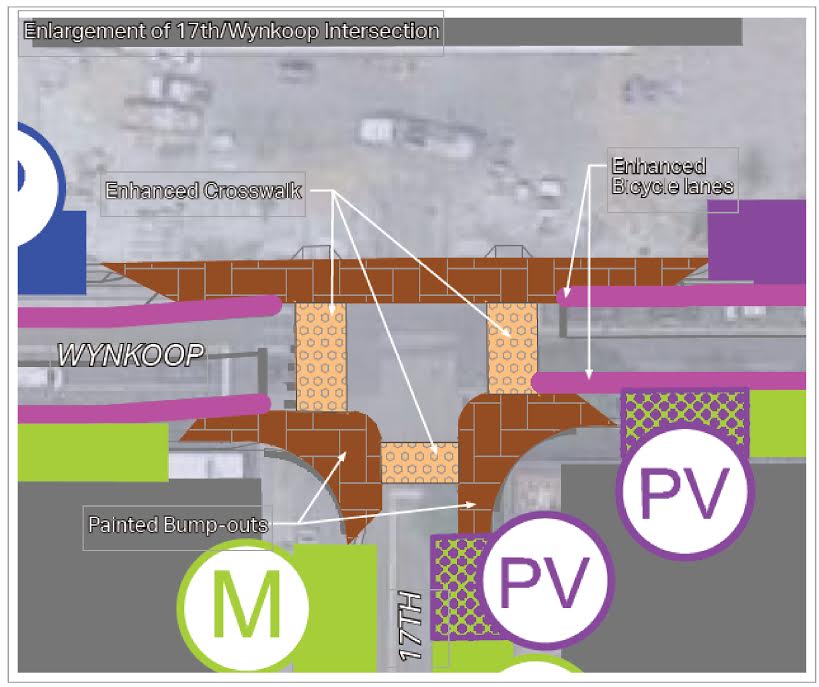Public Works Plans Quick Fixes to Union Station Streets Before A-Line Opens

Union Station officials estimate that 30,000 people a day will pass through the transit hub and commercial center after the A-Line to DIA opens on April 22.
Problem is, the streets around the station aren’t designed to handle the influx: Drivers drop off and pick up passengers in the bike lane and accelerate through crosswalks. Unless the design is changed, conflicts between vehicular and pedestrian traffic will intensify when more rail lines open.
That’s why Union Station Advocates pushed for some rapid fixes in October that would make the intersection of Wynkoop and 17th safer and more efficient for people walking, biking, and driving. At a public meeting last night, the Department of Public Works unveiled a short-term concept that it plans to implement before the A-Line opens.
“The objective is to tidy up this corner immediately, so the intersection of 17th and Wynkoop is pedestrian-oriented and primarily geared toward getting you out of the plaza… and into downtown as a pedestrian,” said Vaughan Davies, an urban designer with AECOM, a planning consultant.
DPW will extend the corners with painted “bump-outs” that shorten crossing distance and slow drivers down, and install textured, painted crosswalks to convey to drivers that pedestrians come first. DPW will also elevate the Wynkoop Street bike lane’s prominence, probably by painting it green and/or adding bollards to keep drivers out of the lane.

The intersection also needs better lighting, residents and business owners said, and probably a traffic officer during rush hour. DPW is “in conversation” with the Denver Police Department and Excel Energy to make those two things happen, but no guarantees.
A better design at this intersection is one way to deal with the upsurge in traffic, but another way is to funnel vehicles out of the area. DPW will try to direct vehicles to kiss-and-rides “behind” Union Station (the Wewatta Street side) by adding signs on Speer, 20th, Park Avenue, and Auraria Parkway. Planners see the Wynkoop side as a destination and the Wewatta side as a commuting center.
“That’s actually the way it’s intended to be operated today,” said Riley LaMie, a city planner with DPW. “Unfortunately that’s not the way that it’s operating today, and we realize it’s because there’s no signage or anything indicating that that’s how it’s supposed to be operated.”
Joe Vostrejs with the Union Station Alliance was skeptical. He said that the lack of amenities on the station’s back side — bathrooms, for example — meant that the Wynkoop Street side will remain the intuitive location for pick-ups and drop-offs.
“Unfortunately, and don’t anyone take this personally, we’ve sort of profoundly mis-planned this,” Vostrejs said. “It’s counterintuitive that when you go to the train station, what you first need to understand is, please don’t use the train station. We’ve got some real difficulties to solve here, and I think we may be a little bit naive to think that we’re not going to have people really using Wynkoop a lot for pickup and drop off.”
These short-terms fixes could be the seeds of a woonerf, a type of street that prioritizes pedestrians and makes motor vehicles less dominant. These improvements will do for now, advocates said.
“It’s exciting, the hierarchy of modes, with the pedestrian being the priority,” said WalkDenver Executive Director Gosia Kung said. “It’s very clear in the design.”


